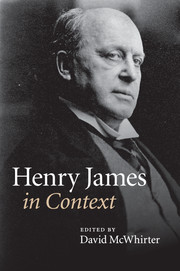Book contents
- Frontmatter
- Contents
- List of Illustrations
- Notes on Contributors
- Preface
- Abbreviations
- Chronology
- Part One Life and career, times and places
- Part Two Historical and cultural contexts
- Chapter 9 Aestheticism and Decadence
- Chapter 10 Authorship
- Chapter 11 Children
- Chapter 12 Consumer culture
- Chapter 13 Cosmopolitanism
- Chapter 14 Courtship, marriage, family
- Chapter 15 Ethics
- Chapter 16 Language
- Chapter 17 Law
- Chapter 18 Manners
- Chapter 19 Media and communication technologies
- Chapter 20 Modernism
- Chapter 21 Money and class
- Chapter 22 Museums and exhibitions
- Chapter 23 Nationalism and imperialism
- Chapter 24 Print culture
- Chapter 25 Psychology
- Chapter 26 Race
- Chapter 27 Realism and naturalism
- Chapter 28 Sexualities and sexology
- Chapter 29 Social sciences and the disciplines
- Chapter 30 Things
- Chapter 31 Time
- Chapter 32 Travel and tourism
- Chapter 33 Urbanity
- Chapter 34 Visual culture
- Chapter 35 Women and men
- Chapter 36 Work
- Part Three Reception
- Further reading
- Index
- References
Chapter 9 - Aestheticism and Decadence
Published online by Cambridge University Press: 05 August 2014
- Frontmatter
- Contents
- List of Illustrations
- Notes on Contributors
- Preface
- Abbreviations
- Chronology
- Part One Life and career, times and places
- Part Two Historical and cultural contexts
- Chapter 9 Aestheticism and Decadence
- Chapter 10 Authorship
- Chapter 11 Children
- Chapter 12 Consumer culture
- Chapter 13 Cosmopolitanism
- Chapter 14 Courtship, marriage, family
- Chapter 15 Ethics
- Chapter 16 Language
- Chapter 17 Law
- Chapter 18 Manners
- Chapter 19 Media and communication technologies
- Chapter 20 Modernism
- Chapter 21 Money and class
- Chapter 22 Museums and exhibitions
- Chapter 23 Nationalism and imperialism
- Chapter 24 Print culture
- Chapter 25 Psychology
- Chapter 26 Race
- Chapter 27 Realism and naturalism
- Chapter 28 Sexualities and sexology
- Chapter 29 Social sciences and the disciplines
- Chapter 30 Things
- Chapter 31 Time
- Chapter 32 Travel and tourism
- Chapter 33 Urbanity
- Chapter 34 Visual culture
- Chapter 35 Women and men
- Chapter 36 Work
- Part Three Reception
- Further reading
- Index
- References
Summary
James explored Aestheticism in his fiction as early as Roderick Hudson (1875) and The Europeans (1878), where he analyzes it through the figures of the dandy and the flâneur, who both play central roles in Aestheticism and Decadence. In 1879–84, the height of the craze for depictions of aesthetic young men and women, the idea of Aestheticism crystallized for James and he developed sharp renditions of characters that could be recognized as aesthetes analogous to those one might find in the pages of Pater or Punch (Figure 1). These included ‘The Author of “Beltraffio”’ and The Portrait of a Lady, as well as The Tragic Muse, where the disturbing Gabriel Nash represents Wildean Aestheticism with a Jamesian shading.
By the mid 1890s Decadent Aestheticism had begun to choke the movement’s milder, more innocent forms. By the end of the decade, a mouldy, overpowering scent of depravity had irrevocably infused itself into Aestheticism’s delicately perfumed pages. ‘The bad smell has, as it were, to be accounted for’, James wrote in an essay of 1904 that grappled with Aestheticism’s reputation for vulgarity. ‘And yet where, amid the roses and lilies and pomegranates, the thousand essences and fragrances, can such a thing possibly be?’ (LC-2, 935). Decadence and Aestheticism had grown up alongside each other like plants sharing the same soil. Over time, decadence’s poor but hearty equivalent, immorality, began to encroach until, in the mid 1890s, Aestheticism was choked by the tangle. The purpose of this chapter is to situate James in the context of Aestheticism and Decadence and the controversies surrounding these movements.
- Type
- Chapter
- Information
- Henry James in Context , pp. 93 - 104Publisher: Cambridge University PressPrint publication year: 2010
References
- 1
- Cited by



